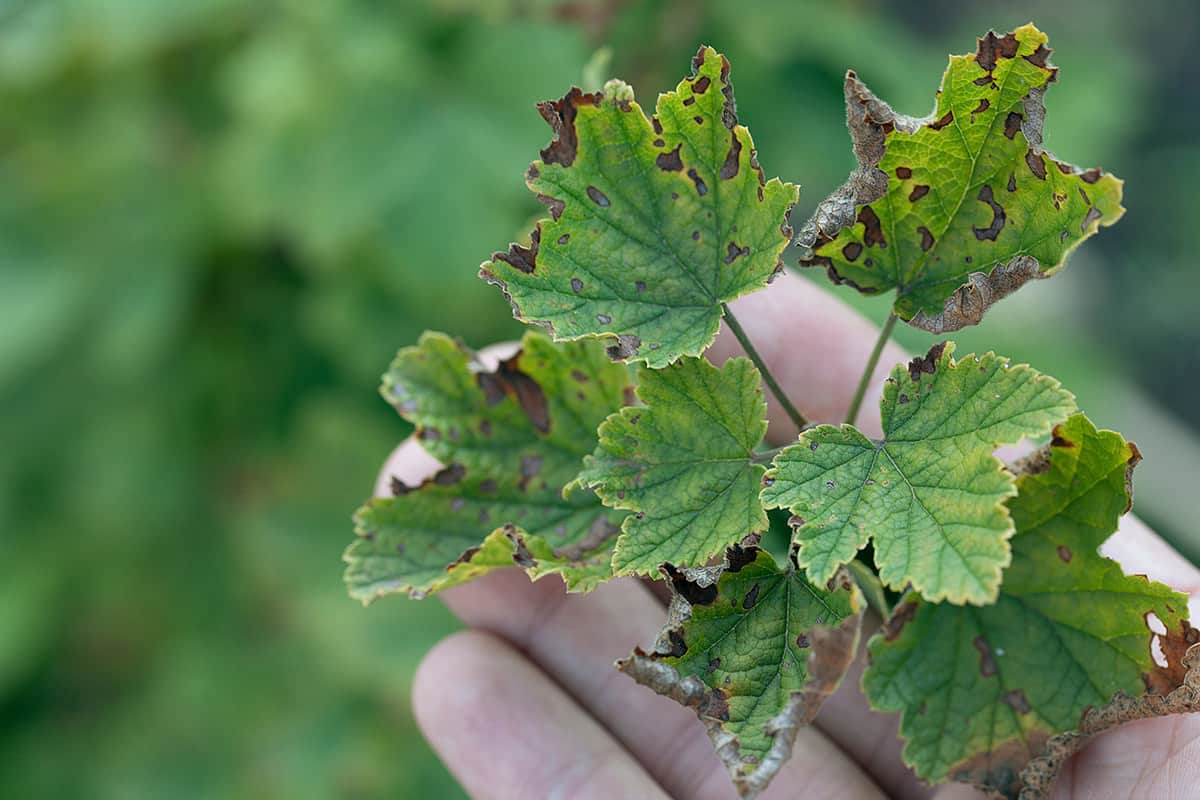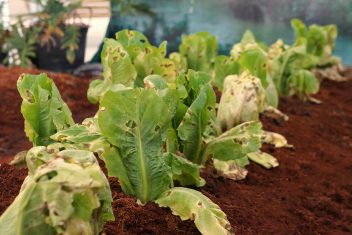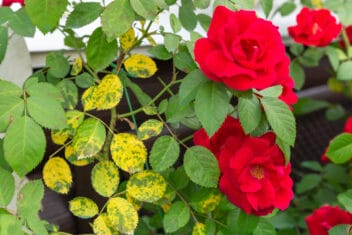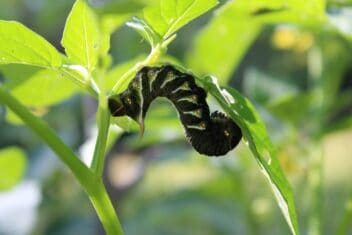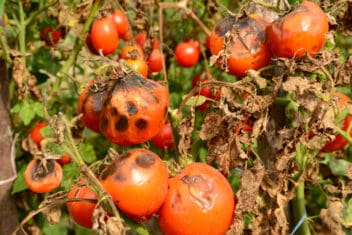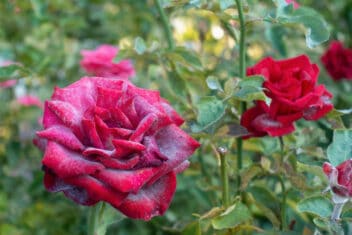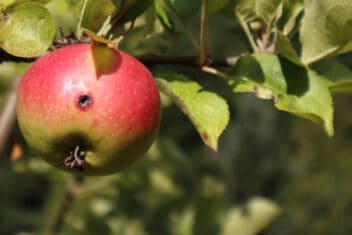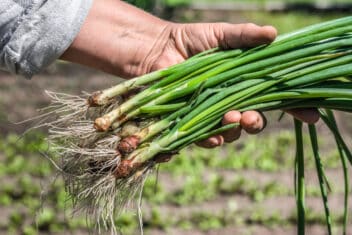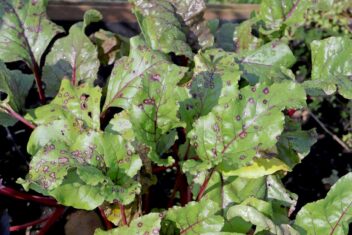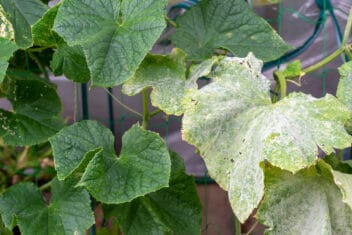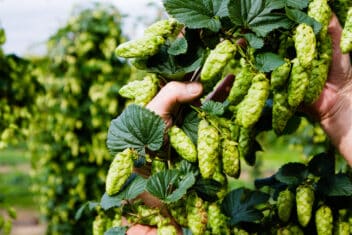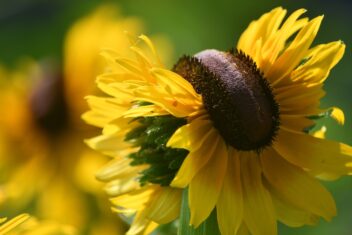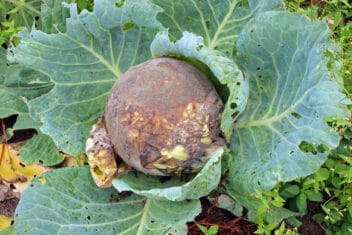Anthracnose, often called twig or shoot blight, affects a variety of plants, trees, and shrubs. It’s hard to combat once it infects your plants, so the key is to prevent anthracnose from appearing in your garden at all.
While this fungus doesn’t always kill the entire plant, it can turn an entire harvest into rotted fruits in a matter of just a few days. Since the fungi overwinter in and on seeds, soil, and garden debris, it’s hard to control.
Let’s look at what you need to know about anthracnose, including how to prevent and control this fungal disease.
What is Anthracnose?
Anthracnose is a disease caused by fungi in the genus Colletotrichum. It’s most prevalent in the eastern part of the United States, and it’s more common in the spring when the weather is cool and wet.
It primarily appears on the leaves and twigs of the small plants.
This fungal disease infects fruit trees, vegetable plants, grasses, and even deciduous and evergreen trees. It doesn’t discriminate; almost anything is possible.
The fungi overwinter in the garden, living in the garden debris like fall leaves. Spring leads to cool, wet weather, which creates the perfect condition for the spores to spread throughout your garden.
The spread and progression of this fungal disease stops when the weather becomes hot and dry, starting again when the conditions are optimal again.
Anthracnose will continue to infect your plants in a yearly cycle, but it’s rarely severe enough to kill your plants. It’s ugly and not desirable in your garden, however. Plus it can ruin your crop.
Plants Frequently Infected by Anthracnose
As mentioned before, this disease infects whatever it finds, but some plants are more likely to face a fungal attack. Here are some examples.
Anthracnose also affects the foliage of different deciduous trees. A few examples include:
- Ash
- Maple
- White Oak
- Sycamore
- Walnut
Identifying Anthracnose
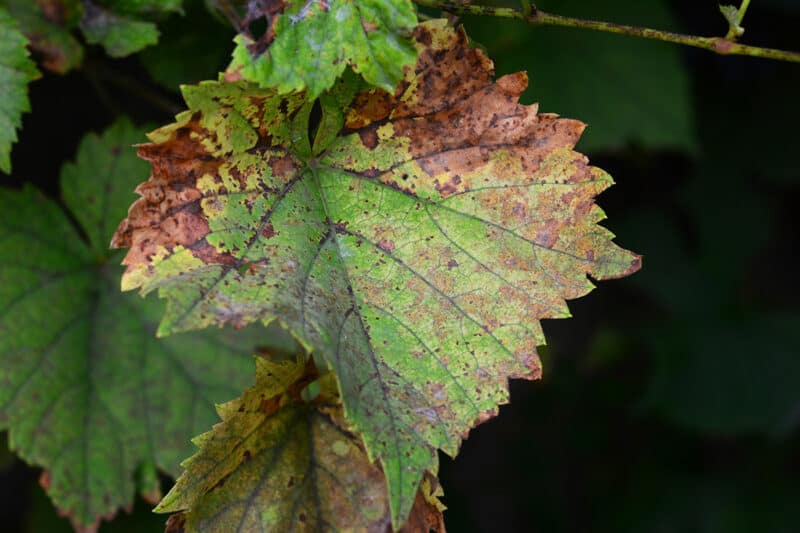
The most obvious place to spot anthracnose is on the leaves and the veins; it causes small lesions. The lesions are dark and sunken, typically found on the stems, flowers, and fruits.
At first, it can be hard to distinguish anthracnose compared to other leaf spot diseases. Take a close look at the underside of the leaves. If you spot a bunch of small tan or brown dots that are the size of a pinhead (really tiny), then chances are you have anthracnose.
Here is how to identify anthracnose on the different parts of the plant.
- The leaves start with small, irregular yellow or brown spots. Over time, the spots darken and expand, eventually covering most of the leaves.
- It affects all parts of the vegetable.
- On the fruits, it produces small, dark, sunken spots that spread easily. When you have chronically moist weather, the pink spores form at the center of the spots. It causes the fruits to rot.
- Anthracnose kills the tips of young twigs on trees while also attacking the young leaves. It also causes the development of brown spots and patches and the defoliation of the trees.
How to Prevent Anthracnose
Controlling anthracnose begins with good sanitation and keeping your garden free of debris. Preventing this fungal disease is much easier than getting rid of it, so here are some suggestions to remember.
Most of these are good gardening practices that all gardeners should use.
1. Clean Up Garden Debris
Keeping your garden clean is a huge part of preventing anthracnose. The fungi live in debris, overwintering until the following spring. If dead plant parts fall on the soil surface, remove them. Don’t let dead leaves and twigs hang around.
2. Keep Your Plants Pruned
Proper pruning methods are essential for trees and plants. Each year, you need to remove any old or dead wood that might be on your plants and trees.
3. Provide Proper Light, Water & Fertilizer
A healthy plant is more likely to recover from a fungal infection, so keep your plants healthy. Ensure they receive the proper amount of light. Most vegetable plants need between six and ten hours of sunlight.
Plants also need the proper amount of water and fertilizer. These are essential for strengthening your plants.
4. Use Crop Rotation
Crop rotation helps prevent anthracnose and other plant diseases from taking over a garden bed and continually infecting your plants.
You need to use a three or four-year crop rotation plan. That means you shouldn’t plant the same crop in the same garden bed for three or four years.
5. Sanitize Gardening Tools
You might spread fungal diseases (as well as other diseases) throughout your garden by failing to disinfect your gardening tools after each use.
It’s easy to forget to do so. You’re in the garden, working, and then you leave your tool right there and go back inside. However, fungi spores live on the tools, so you can easily spread diseases just by failing to disinfect.
Clean your garden tools in a simple solution of one part bleach and ten parts water.
6. Spray Neem Oil Regularly
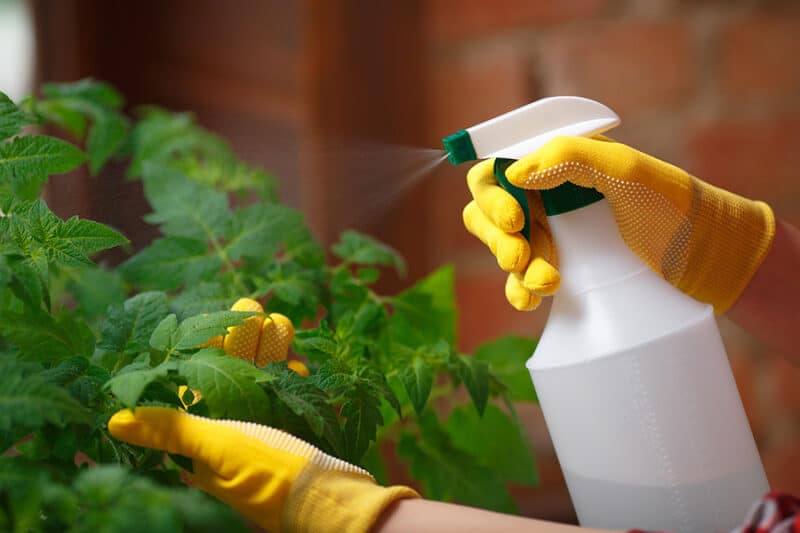
Neem oil is a gardener’s best friend. This organic, multi-purpose fungicide and insecticide kills eggs, larvae, and adult pests. It also helps prevent fungal attacks on plants, plus it’s safe to use on vegetable plants.
Set a schedule and apply neem oil on all of your garden plants every one to two weeks as a preventative measure. When used every week, it might be able to treat an existing anthracnose infection, but only if it’s a mild case.
7. Spread Mulch Under the Plants
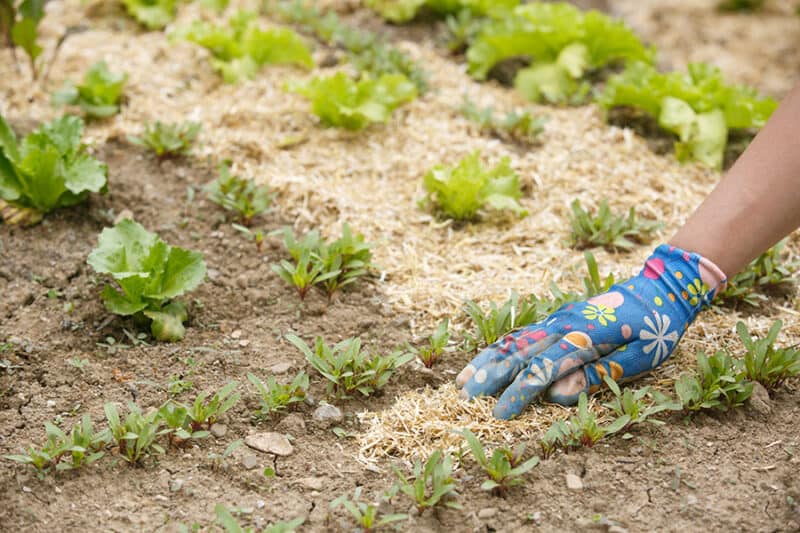
Laying a thick layer of mulch around your plants helps prevent the potentially undesirable plant materials from sitting on the soil.
Shredded leaves, dried grass clippings, cardboard, or newspaper are all options that work. Reducing contact with the dirt is key to stopping the spread and lifespan of the spores.
How to Get Rid of Anthracnose
Whether you forgot to use preventative measures or they didn’t work, if you find that your plants have anthracnose, here are some suggestions for getting rid of this fungal disease.
1. Dispose of Diseased Plant Parts
Never let diseased plant part debris hang out on the soil. Doing so allows the fungi to live and spread throughout your garden indefinitely.
Anthracnose is a cyclical disease that will continue to come back, so make sure you remove any diseased plant material.
2. Prune Off Diseased Parts of the Plant
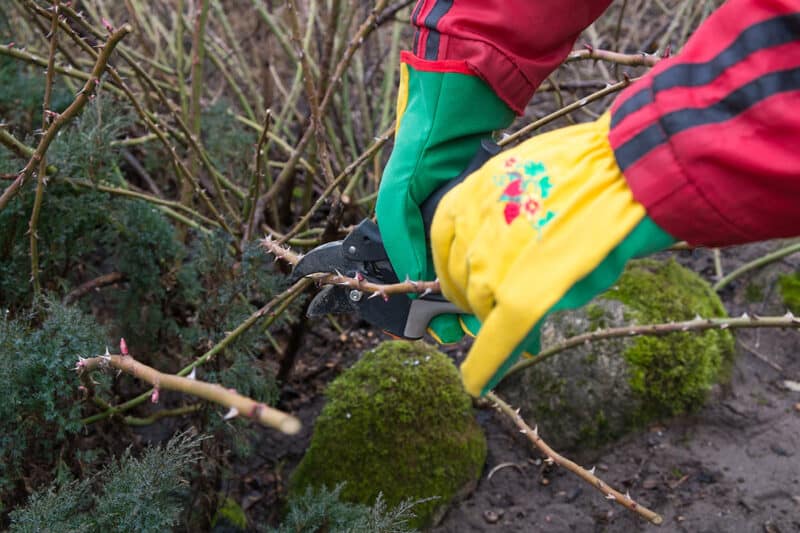
If your plant has anthracnose, pruning off the diseased parts of the plant and disposing of them properly can help prevent the spread to other parts of your plant.
Make sure you don’t put any diseased plant parts in a compost. Composting infected plants cause the spores to overwinter in the compost. Then, when you spread it over your garden, you infect everything!
3. Use Copper-Based Fungicides
Copper-based fungicides are a natural approach to getting rid of anthracnose, as well as other fungal infections.
Most gardening centers sell these sprays, but be careful when you spray your plants. Copper builds up to toxic levels in the soil, which kills earthworms and microbes. Follow the directions closely.
4. Never Save These Seeds
Believe it or not, this fungus even lives on the seeds. If you have a garden infected with anthracnose, never save your own seeds. Start the next year with new, resistant plant varieties.
Use western-grown seeds that have yet to be exposed to this disease.
If you plant seeds saved from an infected plant, you’re introducing the fungi right back into the soil.
5. Chemical Treatments for Serious Situations
In rare situations, an anthracnose infection requires chemical treatment. This is typically only when the fungal disease infects a newly transplanted seedling or when it continues to cause defoliation throughout your garden.
Often, these infections require multiple treatments. It’s recommended that you switch chemicals to help combat it fully. This is especially true if it’s infecting a tree.
